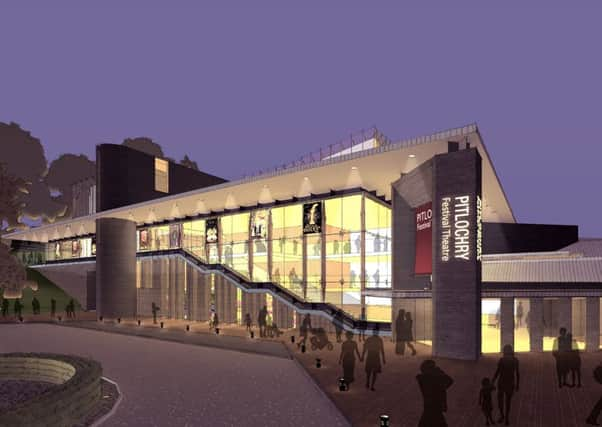Joyce McMillan: Ambitious £25m Pitlochry expansion


Those who like the theatre-in-the-hills just as it is, though – standing quietly in the gorgeous riverside site it has occupied since the current building was opened in 1981 – should perhaps savour the next couple of Pitlochry seasons as best they can. For this week, the theatre’s board, and its artistic director John Durnin, announced a massive programme of development, which they’re calling Vision 2021. If their fundraising programme is successful, then from 2016, the Pitlochry company will begin to transform itself into a much more ambitious organisation, touring more of its shows around Scotland and beyond, and extending its summer season into the spring as well as the autumn.
And in 2019, the theatre will close for two years, to allow for a huge rebuilding programme designed to create a completely refurbished main auditorium with a full-size fly-tower, a new studio theatre, extended workshop facilities, a much larger foyer with new restaurant and shopping areas, and a new riverside frontage, with entrances direct from the waterside; in a nod to Pitlochry’s history, the 2019 and 2020 seasons will meanwhile take place in a state-of-the-art marquee, elsewhere in town. The projected cost of the scheme is at least £25 million; but Durnin and the board are convinced that if Pitlochry is to keep on growing artistically and creatively, then in the current funding climate, it also has to grow commercially, aiming to increase its audience by 40 per cent over the next eight years, and to boost its income as a tourist “destination”, as well as attracting those who enjoy its traditional offering of six plays in six summer days.
Advertisement
Hide AdIt’s clear that to launch such an ambitious development scheme in the current economic climate is a huge challenge, and John Durnin could hardly be more frank about the complexity of the issues that may arise as it progresses. Although the company has now been working for over a year with the Dundee-based theatre architects Nicoll Russell, legendary designers of Dundee Rep and the Byre, it will be another year before architectural plans are finalised. Then there will be planning issues around the proposed 50 per cent increase in the size of the building, and around the height of the fly-tower, although there are many creative ideas in play about how to make the tower merge into the glorious Perthshire landscape. And beyond all that lies the chronic uncertainty of fund-raising on such a scale, in a difficult financial climate.
As the artistic director behind the project, though, John Durnin is certain that this kind of major development at Pitlochry makes sense, both practically and creatively. The aim is to transform Pitlochry into Scotland’s premier building-based producing theatre, creating shows at every scale, from main stage to cabaret; to link the company much more closely to the Scottish and international touring infrastructure, both as a receiving theatre and as a touring company in its own right; and to make it Scotland’s key theatrical production centre in areas like costume-making, set-building, and technical training.
“Pitlochry Festival Theatre is already one of the biggest employers in the area, and a huge contributor to the local community,” says Durnin, “and we want to keep on growing every aspect of that contribution, both artistic and economic. The more debate and consultation we can have about it, though, the better it will be. Because this is such a huge project that it will only work if we can take everyone with us. We’ve already had several public meetings in the Pitlochry area; and now we want to know everyone’s views, so that we can get this right, and take the theatre forward into a whole new era.”